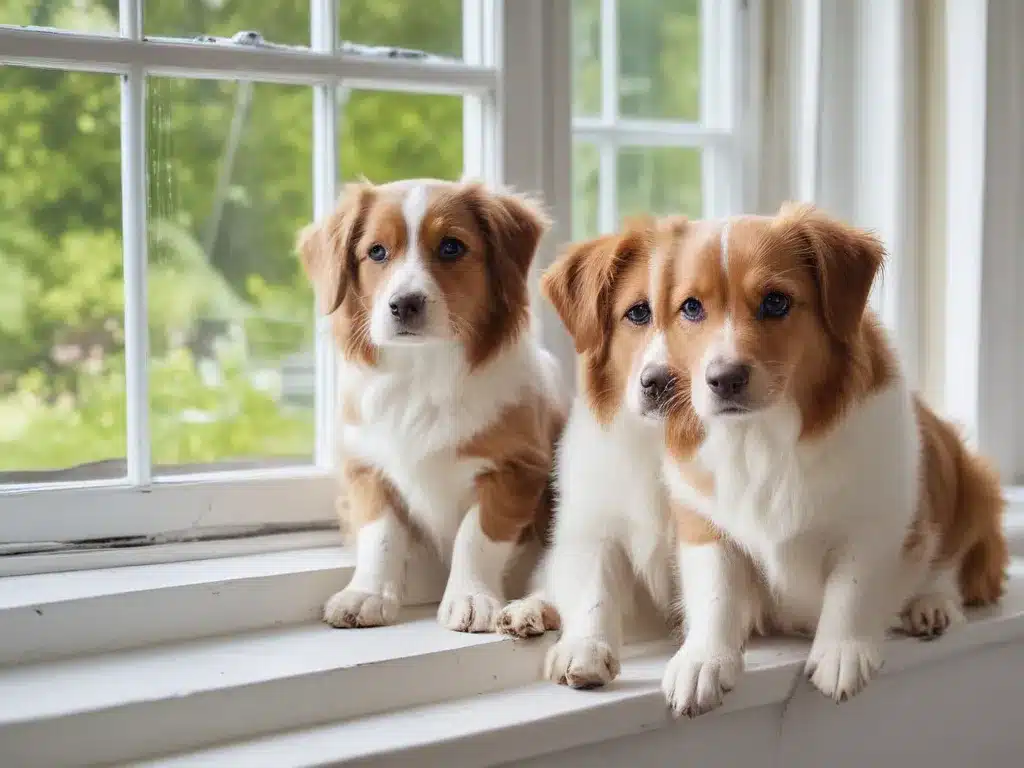Introduction
Pets love to gaze out of windows, watching the world go by and taking in all the sights and sounds that come with it. However, over time, those beloved windows can become smeared with nose prints, paw marks, and other unsightly messes. Cleaning windows with pets can be a challenging task, but it’s an essential one to maintain a clear view and a welcoming home. In this comprehensive guide, I’ll share my expert tips and tricks for effectively cleaning windows that your furry friends adore.
The Importance of Clean Windows for Pets
Clean windows serve multiple purposes for our pets. Firstly, they provide a clear and unobstructed view of the outside world, allowing your pets to indulge in their natural curiosity and stay entertained. Secondly, clean windows ensure that your pets can safely look out without the risk of ingesting harmful substances or bacteria that may accumulate on dirty surfaces. Additionally, clean windows contribute to a healthier indoor environment by reducing the buildup of pet dander, fur, and other allergens.
Preparing for Window Cleaning
Before diving into the cleaning process, it’s crucial to prepare the area and gather the necessary supplies. Here are the steps to follow:
-
Remove Obstructions: Clear the window area of any furniture, curtains, or blinds that may hinder the cleaning process. This will ensure unobstructed access to the windows and prevent any accidental damage.
-
Gather Supplies: Assemble your cleaning materials, including a high-quality glass cleaner (preferably eco-friendly and pet-safe), microfiber cloths or paper towels, a squeegee, and a step stool or ladder if needed.
-
Prepare the Cleaning Solution: If you prefer to make your own cleaning solution, mix equal parts of water and white vinegar in a spray bottle. The vinegar acts as a natural disinfectant and helps cut through stubborn grime.
-
Protect Surrounding Areas: Use drop cloths or towels to protect the floor and nearby surfaces from any potential spills or drips during the cleaning process.
The Cleaning Process
Now that you’re prepared, it’s time to tackle those pet-smeared windows. Follow these steps for a thorough and effective cleaning:
-
Preliminary Wipe-down: Start by wiping down the window surfaces with a damp microfiber cloth or paper towel. This initial step will remove any loose dirt, dust, or pet hair, making the subsequent cleaning more efficient.
-
Apply the Cleaning Solution: Generously spray the glass cleaner or homemade vinegar solution onto the window surfaces, ensuring even coverage.
-
Scrub and Agitate: Using a microfiber cloth or a non-abrasive scrubbing pad, gently scrub the windows in a circular motion. Pay special attention to areas with stubborn nose prints, paw marks, or dried messes.
-
Squeegee and Wipe: Once you’ve thoroughly scrubbed the windows, use a squeegee or dry microfiber cloth to wipe away the cleaning solution and any remaining residue. Start from the top and work your way down, ensuring a streak-free finish.
-
Dry and Polish: Finally, use a clean, dry microfiber cloth to buff and polish the windows, removing any remaining streaks or water spots.
Tackling Tough Stains and Messes
Sometimes, regular cleaning methods may not be enough to remove stubborn stains or messes left by our furry friends. In these cases, consider the following additional techniques:
-
Baking Soda Paste: For tough, dried-on messes, create a paste by mixing baking soda and water. Gently scrub the affected area with the paste using a non-abrasive sponge or cloth. Baking soda’s mild abrasive properties can help lift stubborn stains without damaging the glass.
-
Razor Blade Scraping: If you encounter dried or hardened messes that resist scrubbing, you can carefully use a razor blade to scrape them off the glass. Hold the blade at a low angle and gently scrape in one direction, being careful not to scratch the glass.
-
Specialty Cleaners: In extreme cases, you may need to use a specialized pet stain remover or enzyme cleaner designed to break down organic messes like urine or feces. Always follow the product’s instructions carefully and test on a small, inconspicuous area first.
Preventative Measures
While regular cleaning is essential, taking preventative measures can help minimize the need for frequent deep cleaning and protect your windows from future pet-related messes. Consider the following tips:
-
Install Window Guards or Screens: Window guards or screens can act as a physical barrier between your pets and the windows, preventing direct contact and reducing the likelihood of nose prints and paw marks.
-
Provide Alternative Viewing Spots: Set up designated pet-friendly viewing areas, such as perches or window seats, to discourage your pets from pressing their noses or paws against the glass.
-
Train Your Pets: Positive reinforcement training can help teach your pets not to jump on or scratch the windows. Reward them for good behavior and redirect their attention when necessary.
-
Regular Grooming: Maintaining a consistent grooming routine for your pets can help reduce the amount of pet hair, dander, and oils that accumulate on the windows over time.
Conclusion
Cleaning windows that your pets love to look out of can be a daunting task, but with the right techniques and preventative measures, it can become a manageable chore. By following the steps outlined in this guide, you’ll not only achieve sparkling clean windows but also create a healthier and more enjoyable environment for your furry companions. Remember, regular cleaning and preventative measures are key to maintaining clear views and a pet-friendly home.







